Warming erodes Kuwait’s power and water reserves
14 August 2023
 More on Kuwait’s power and water sector:
More on Kuwait’s power and water sector:
> IWPP: Firms respond to Kuwait independent utilities request
> POWER: Local firm wins 250MW Subiya package
> PRIVATISATION: Kuwait thermal plant privatisation to go ahead

The temperature in Kuwait soared to 51 degrees Celsius on 1 August, sending its electricity load index up to 16,940MW. This breached its maximum expected load this year of 16,830MW by 0.7 per cent.
This year’s projected maximum load is already 4 per cent higher than the previous year's recorded maximum load. It leaves only roughly 8 per cent of reserve capacity against an available capacity understood to stand at 18,250MW.
Similarly, water consumption across the Gulf state on 2 August, when the temperature decreased to 50 degrees, exceeded production by 29 million gallons, prompting the state utility to access its strategic water reserve capacity to plug the shortfall.
The electricity consumption spike reportedly caused two feeders at the country’s main substation south of Surra in the capital to trip, which led to power outages in some parts of Zahra, a district in Kuwait’s Hawalli governorate.
Kuwait’s Electricity & Renewable Energy Ministry (MEWRE) assured the public that the maximum capacity available in the country’s electricity network during the current summer is 18,250MW, as earlier cited, and that it could safely provide up to 17,660MW.
Persistent delays
The following week MEWRE – through the Kuwait Authority for Partnership Projects (Kapp) – received prequalification applications for the contracts to develop Kuwait’s next two independent water and power producer (IWPP) projects.
The two schemes – Al-Zour North 2 & 3 and Al-Khiran 1 – will have a total combined power generation capacity of 4,500MW and a water desalination capacity of over 150 million imperial gallons a day (MIGD), which will go a long way to address Kuwait’s precarious electricity and water supply situation.
Ironically, these two schemes have been in the planning and early procurement stages since 2017 and have suffered significant delays in the intervening period.
It is the second time developers have submitted statements of qualification (SOQs) for the contracts over the preceding 11 months.
The delays have caused major frustration for some developers and contractors. One utility developer that submitted an SOQ in September last year told MEED they did not participate in the latest attempt to start the prequalification process for the IWPP schemes, without elaborating.
Others expect the country’s stakeholders to eventually approve and expedite the procurement process for the integrated power and desalination facilities.
“I’m not very optimistic, but we submitted an SOQ anyway,” another source tells MEED.
EPC projects motoring ahead
The ministry’s conventional power plant projects have been moving at a relatively faster pace. In June this year, the local company Heavy Engineering Industries & Shipbuilding (Heisco) won a contract for the phase 2 upgrade of the Subiya power plant complex in Kuwait.
Heisco saw off competition from two local companies, Alghanim International and Al-Zain United General Trading & Contracting, for the KD114.28m ($372m) contract.
The project aims to convert an existing 250MW simple-cycle plant into a combined-cycle gas-turbine plant.
In April, a consortium comprising Heisco and Japan’s Mitsubishi Power was also awarded a contract to retrofit the main thermal power generation plant at the power complex.
The contract is understood to be valued at KD90.9m. It entails the upgrade of eight steam turbines and electric generators at the Subiya power plant, which is expected to reach a capacity of 2,400MW once the project is complete.
The existing plant at the Subiya power complex was commissioned between 1998 and 2002. This implies that the steam turbines and generators in commercial operation for nearly 20 years require upgrades to continue operating and improve their performance.
Two steps forward
While the country has pledged to become carbon neutral by 2060, the state utility has yet to make any remarkable progress in procuring new renewable energy capacity.
The recent political deadlock has hampered the procurement of the next phases of the Shagaya Renewable Energy Programme (SREP), despite the award 12 months previously of the project’s transaction advisory contract to a team led by London-headquartered consultancy firm EY.
At the time, the advisory contract was understood to cover the Al-Dibdibah solar project, which will comprise SREP’s second phase, and a third phase expected to include a 720MW solar photovoltaic (PV) plant, a 1,150MW concentrated solar power (CSP) facility and a wind power farm.
Notably, two state-backed downstream operators – Kuwait National Petroleum Company and Kuwait Integrated Petroleum Industries Company (Kipic) – have launched a tender for a contract to undertake a pre-feasibility study identifying opportunities to use renewable energy in their operations.
Kuwait is also expected to make some progress on its first utility privatisation scheme, which forms part of the initiative to strengthen private sector participation in the sector.
In December last year, it was revealed that UK-headquartered Deloitte had submitted a low bid of KD1.2m ($3.9m) for the transaction advisory contract in line with the planned privatisation of the $1.26bn North Shuaiba power and water plant in Kuwait.
GCC grid
While working to boost its electricity reserves and make its electricity systems greener, Kuwait stands to benefit from the ongoing upgrade of the GCC electricity grid, through which other GCC states, such as the UAE, may decide to transmit excess clean energy.
The Al-Fadhili high-voltage direct current (HVDC) converter station upgrade in Saudi Arabia is expected to enable the exchange of 1,800MW of electricity between the six states once complete.
In October last year, the GCC Interconnection Authority (GCCIA) awarded India-based KEC International a contract for an overhead transmission line project linking the substations in Wafra in Kuwait and Fadhili in Saudi Arabia.
The estimated $120m project extends an existing double-circuit 400kV line from Al-Zour in Kuwait to Ghunan in Saudi Arabia. The line has an intermediate interconnection at Fadhili, with associated substations completed in 2009 as part of the first phase of the GCCIA network. The new project is expected to complete in 2025.
 This month’s special report on Kuwait also includes:
This month’s special report on Kuwait also includes:
> ECONOMY: Stakeholders hope Kuwait can execute spending plans
> ENERGY: Kuwait’s $300bn energy target is a big test
> BANKING: Kuwaiti banks enter bounce-back mode
> INTERVIEW: Kuwait’s Gulf Centre United sets course for expansion
Exclusive from Meed
-
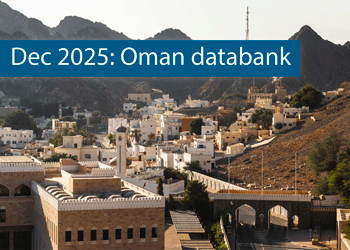 Oman’s growth forecast points upwards
Oman’s growth forecast points upwards24 December 2025
-
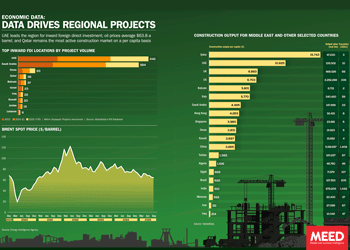 December 2025: Data drives regional projects
December 2025: Data drives regional projects23 December 2025
-
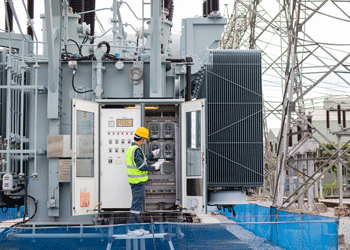 Local firm bids lowest for Kuwait substation deal
Local firm bids lowest for Kuwait substation deal22 December 2025
-
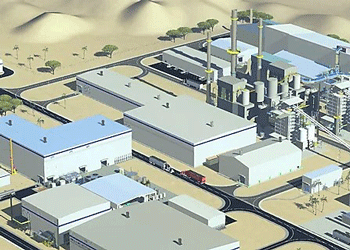 Saudi-Dutch JV awards ‘supercentre’ metals reclamation project
Saudi-Dutch JV awards ‘supercentre’ metals reclamation project22 December 2025
-
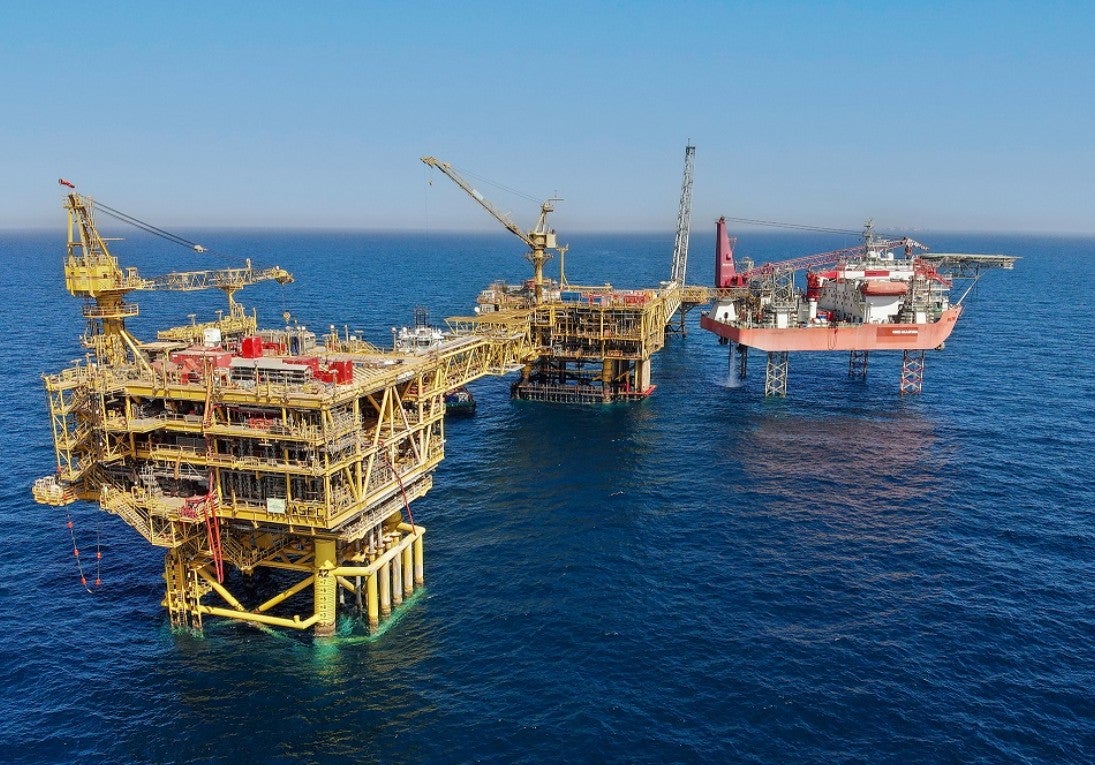 QatarEnergy LNG awards $4bn gas project package
QatarEnergy LNG awards $4bn gas project package22 December 2025
All of this is only 1% of what MEED.com has to offer
Subscribe now and unlock all the 153,671 articles on MEED.com
- All the latest news, data, and market intelligence across MENA at your fingerprints
- First-hand updates and inside information on projects, clients and competitors that matter to you
- 20 years' archive of information, data, and news for you to access at your convenience
- Strategize to succeed and minimise risks with timely analysis of current and future market trends

Related Articles
-
 Oman’s growth forecast points upwards
Oman’s growth forecast points upwards24 December 2025

MEED’s January 2026 report on Oman includes:
> COMMENT: Oman steadies growth with strategic restraint
> GVT & ECONOMY: Oman pursues diversification amid regional concerns
> BANKING: Oman banks feel impact of stronger economy
> OIL & GAS: LNG goals galvanise Oman’s oil and gas sector
> POWER & WATER: Oman prepares for a wave of IPP awards
> CONSTRUCTION: Momentum builds in construction sectorTo see previous issues of MEED Business Review, please click herehttps://image.digitalinsightresearch.in/uploads/NewsArticle/15306449/main.gif -
 December 2025: Data drives regional projects
December 2025: Data drives regional projects23 December 2025
Click here to download the PDF
Includes: Top inward FDI locations by project volume | Brent spot price | Construction output
MEED’s January 2026 report on Oman includes:
> COMMENT: Oman steadies growth with strategic restraint
> ECONOMY: Oman pursues diversification amid regional concerns
> BANKING: Oman banks feel impact of stronger economy
> OIL & GAS: LNG goals galvanise Oman’s oil and gas sector
> POWER & WATER: Oman prepares for a wave of IPP awards
> CONSTRUCTION: Momentum builds in construction sectorTo see previous issues of MEED Business Review, please click herehttps://image.digitalinsightresearch.in/uploads/NewsArticle/15306140/main.gif -
 Local firm bids lowest for Kuwait substation deal
Local firm bids lowest for Kuwait substation deal22 December 2025
The local Al-Ahleia Switchgear Company has submitted the lowest price of KD33.9m ($110.3m) for a contract to build a 400/132/11 kV substation at the South Surra township for Kuwait’s Public Authority for Housing Welfare (PAHW).
The bid was marginally lower than the two other offers of KD35.1m and KD35.5m submitted respectively by Saudi Arabia’s National Contracting Company (NCC) and India’s Larsen & Toubro.
PAHW is expected to take about three months to evaluate the prices before selecting the successful contractor.
The project is one of several transmission and distribution projects either out to bid or recently awarded by Kuwait’s main affordable housing client.
This year alone, it has awarded two contracts worth more than $100m for cable works at its 1Z, 2Z, 3Z and 4Z 400kV substations at Al-Istiqlal City, and two deals totalling just under $280m for the construction of seven 132/11kV substations in the same township.
Most recently, it has tendered two contracts to build seven 132/11kV main substations at its affordable housing project, west of Kuwait City. The bid deadline for the two deals covering the MS-01 through to MS-08 substations is 8 January.
https://image.digitalinsightresearch.in/uploads/NewsArticle/15305745/main.gif -
 Saudi-Dutch JV awards ‘supercentre’ metals reclamation project
Saudi-Dutch JV awards ‘supercentre’ metals reclamation project22 December 2025
The local Advanced Circular Materials Company (ACMC), a joint venture of the Netherlands-based Shell & AMG Recycling BV (SARBV) and local firm United Company for Industry (UCI), has awarded the engineering, procurement and construction (EPC) contract for the first phase of its $500m-plus metals reclamation complex in Jubail.
The contract, estimated to be worth in excess of $200m, was won by China TianChen Engineering Corporation (TCC), a subsidiary of China National Chemical Engineering Company (CNCEC), following the issue of the tender in July 2024.
Under the terms of the deal, TCC will process gasification ash generated at Saudi Aramco’s Jizan refining complex on the Red Sea coast to produce battery-grade vanadium oxide and vanadium electrolyte for vanadium redox flow batteries. AMG will provide the licensed technology required for the production process.
The works are the first of four planned phases at the catalyst and gasification ash recycling ‘Supercentre’, which is located at the PlasChem Park in Jubail Industrial City 2 alongside the Sadara integrated refining and petrochemical complex.
Phase 2 will expand the facility to process spent catalysts from heavy oil upgrading facilities to produce ferrovanadium for the steel industry and/or additional battery-grade vanadium oxide.
Phase 3 involves installing a manufacturing facility for residue-upgrading catalysts.
In the fourth phase, a vanadium electrolyte production plant will be developed.
The developers expect a total reduction of 3.6 million metric tonnes of carbon dioxide emissions a year when the four phases of the project are commissioned.
SARBV first announced its intention to build a metal reclamation and catalyst manufacturing facility in Saudi Arabia in November 2019. The kingdom’s Ministry of Investment, then known as the Saudi Arabian General Investment Authority (Sagia), supported the project.
In July 2022, SARBV and UCI signed the agreement to formalise their joint venture and build the proposed facility.
The project has received support from Saudi Aramco’s Namaat industrial investment programme. Aramco, at the time, also signed an agreement with the joint venture to offtake vanadium-bearing gasification ash from its Jizan refining complex.
Photo credit: SARBV
https://image.digitalinsightresearch.in/uploads/NewsArticle/15305326/main.gif -
 QatarEnergy LNG awards $4bn gas project package
QatarEnergy LNG awards $4bn gas project package22 December 2025
QatarEnergy LNG, a subsidiary of state-owned QatarEnergy, has awarded the main engineering, procurement, construction and installation (EPCI) contract for a major package for the second phase of its North Field Production Sustainability (NFPS) project.A consortium comprising the Italian contractor Saipem and state-owned China Offshore Oil Engineering Company (COOEC) has secured the EPCI contract for the COMP5 package. The contract value is $4bn, with Saipem declaring its share to be worth $3.1bn.
Milan-headquartered Saipem said the contract will run for about five years. The scope of work comprises engineering, procurement, fabrication and installation of two compression complexes, each including a compression platform, a living quarters platform, a flare platform supporting the gas combustion system, and the related interconnecting bridges. Each complex will have a total weight of about 68,000 tonnes.
Offshore installation operations will be carried out by Saipem’s De He construction vessel in 2029 and 2030.
MEED previously reported that the following contractors submitted bids for the NFPS phase two COMP5 package:
- Larsen & Toubro Energy Hydrocarbon (India)
- McDermott (US)
- Saipem/China Offshore Oil Engineering Company (Italy/China)
QatarEnergy LNG, formerly Qatargas, is said to have issued the tender for the NFPS phase two COMP5 package in the first quarter of the year.
Contractors submitted technical bids for the COMP5 package in late June, while commercial bids were submitted by 8 October, as per sources.
Based upon initial evaluation of bids by QatarEnergy LNG, L&TEH has emerged as the lowest bidder for the COMP5 package, followed by McDermott, with the consortium of Saipem and COOEC in third place, MEED reported in late October.
In the weeks following that, the project operator is said to have engaged all bidders for a final round of negotiations, during which the consortium of Saipem and COOEC is believed to have “clinched the deal”, according to sources.
The detailed scope of work on the COMP5 package covers the EPCI work on the following:
- Two gas compression platforms, each weighing 30,000-35,000 tonnes, plus jacket
- Two living quarters platforms, plus jacket
- Two gas flare platforms, plus jacket
- Brownfield modification work at two complexes
NFPS scheme
QatarEnergy’s North Field liquefied natural gas (LNG) expansion programme requires the state enterprise to pump large volumes of gas from the North Field offshore reserve to feed the three phases of the estimated $40bn-plus programme.
QatarEnergy has already invested billions of dollars in engineering, procurement and construction works on the two phases of the NFPS project, which aims to maintain steady gas feedstock for the North Field LNG expansion phases.
The second NFPS phase will mainly involve building gas compression facilities to sustain and gradually increase gas production from Qatar’s offshore North Field gas reserve over the long term.
Saipem has been the most successful contractor on the second NFPS phase, securing work worth a total of $8.5bn.
QatarEnergy LNG awarded Saipem a $4.5bn order in October 2022 to build and install gas compression facilities. The main scope of work on the package, which is known as EPCI 2, covers two large gas compression complexes that will comprise decks, jackets, topsides, interconnecting bridges, flare platforms, living quarters and interface modules.
The gas compression complexes – CP65 and CP75 – will weigh 62,000 tonnes and 63,000 tonnes, respectively, and will be the largest fixed steel jacket compression platforms ever built.
Following that, Saipem won combined packages COMP3A and COMP3B of the NFPS project’s second phase in September last year.
The scope of work on the combined packages encompasses the EPCI of a total of six platforms, approximately 100 kilometres (km) of corrosion resistance alloy rigid subsea pipelines of 28-inches and 24-inches diameter, 100km of subsea composite cables, 150km of fibre optic cables and several other subsea units.
Separately, QatarEnergy LNG awarded McDermott the contract for the NFPS second phase package known as EPCI 1, or COMP1, in July 2023. The scope of work on the estimated $1bn-plus contract is to install a subsea gas pipeline network at the North Field gas development.
In March this year, India’s Larsen & Toubro Energy Hydrocarbon (LTEH) won the main contract for the combined 4A and 4B package, which is the fourth package of the second phase of the NFPS project and is estimated to be valued at $4bn-$5bn.
The main scope of work on the package is the EPCI of two large gas compression systems that will be known as CP8S and CP4N, each weighing 25,000-35,000 tonnes. The contract scope also includes compression platforms, flare gas platforms and other associated structures.
LTHE sub-contracted detailed engineering and design works on the combined 4A and 4B package to French contractor Technip Energies.
NFPS first phase
Saipem is also executing the EPCI works on the entire first phase of the NFPS project, which consists of two main packages.
Through the first phase of the NFPS scheme, QatarEnergy LNG aims to increase the early gas field production capacity of the North Field offshore development to 110 million tonnes a year.
QatarEnergy LNG awarded Saipem the contract for the EPCI package in February 2021. The package is the larger of the two NFPS phase one packages and has a value of $1.7bn.
Saipem’s scope of work on the EPCI package encompasses building several offshore facilities for extracting and transporting natural gas, including platforms, supporting and connecting structures, subsea cables and anti-corrosion internally clad pipelines.
The scope of work also includes decommissioning a pipeline and other significant modifications to existing offshore facilities.
In addition, in April 2021, QatarEnergy LNG awarded Saipem two options for additional work within the EPCI package, worth about $350m.
QatarEnergy LNG awarded Saipem the second package of the NFPS phase one project, estimated to be worth $1bn, in March 2021.
Saipem’s scope of work on the package, which is known as EPCL, mainly covers installing three offshore export trunklines running almost 300km from their respective offshore platforms to the QatarEnergy LNG north and south plants located in Ras Laffan Industrial City.
Saipem performed the front-end engineering and design work on the main production package of the first phase of the NFPS as part of a $20m contract that it was awarded in January 2019. This provided a competitive advantage to the Italian contractor in its bid to win the package.
https://image.digitalinsightresearch.in/uploads/NewsArticle/15305330/main2239.jpg

